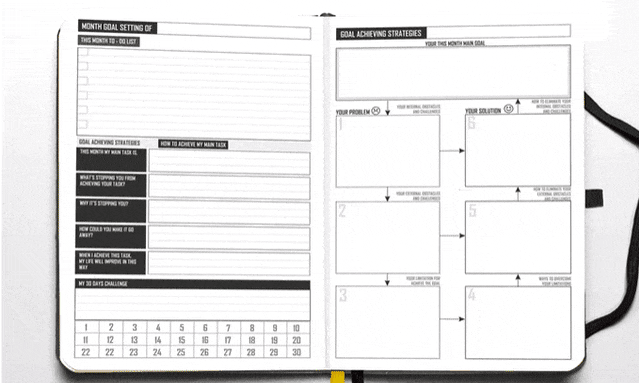
EHS Software ROI
EHS software ROI calculator, organizations can estimate the financial return on investment of implementing EHS software.
Know your ROI on investment in workplace safety.
In this article, we will discuss how to calculate the ROI of EHS software. We will begin by defining EHS software and its benefits, then move on to the ROI calculation methodology, and conclude with a discussion on how to measure and maximize the ROI of EHS software.
What is EHS Software?
EHS software is a tool that helps organizations manage their environmental, health, and safety programs. It provides a centralized platform to track and report on incidents, hazards, corrective actions, compliance, and other EHS-related activities. EHS software can also integrate with other enterprise systems such as HR, finance, and operations, providing a holistic view of an organization’s EHS performance.

Benefits of EHS Software
EHS software offers several benefits to organizations
Improved Compliance
EHS software provides a centralized platform to manage compliance requirements, such as regulatory reporting and permit tracking. This reduces the risk of non-compliance penalties and fines.
Enhanced Risk Managment
EHS software helps organizations identify and assess risks associated with their operations. This allows for the implementation of preventative measures to mitigate the risk of incidents.
Increased Operational Efficiency
EHS software streamlines processes and reduces administrative burdens associated with EHS management. This results in time savings and increased productivity.
Better Data Management
EHS software provides a centralized platform to store and manage EHS-related data. This improves data accuracy and reduces the risk of data errors.
Improved Decision Making
EHS software provides real-time visibility into EHS performance, allowing for better decision making and strategic planning.
Predictive Analytics
Predictive risk analytics leverages the past and present data to predict what is likely to happen. Develop risk reduction strategy based on predictive analytics.
ROI Calculation Methodology
To calculate the ROI of EHS software, follow simple three steps
Step 1 - Determine the cost
The costs associated with EHS software can include software licensing, implementation, training, maintenance, and support. These costs can be obtained from the software vendor or through internal cost estimation.
Step 2 - Determine Benefits
The benefits of EHS software can include improved compliance, enhanced risk management, increased operational efficiency, better data management, and improved decision making. The benefits can be quantified by estimating the expected reduction in costs associated with each benefit. For example, the expected reduction in non-compliance penalties or the expected reduction in the number of incidents. These costs can be obtained from the software vendor or through internal cost estimation.
Step 3 Calculate the ROI
The ROI can be calculated using the following formula:
ROI = (Total Benefits – Total Costs) / Total Costs
The ROI can be expressed as a percentage or a ratio. A positive ROI indicates that the benefits outweigh the costs, while a negative ROI indicates that the costs outweigh the benefits.
Measuring and Maximizing the ROI of EHS Software
To measure and maximize the ROI of EHS software, the following strategies can be implemented

1. Define Clear Goals and Objectives
Before implementing EHS software, it is important to define clear goals and objectives. This allows for the development of a focused implementation plan and ensures that the ROI calculation is accurate. The goals and objectives should be specific, measurable, achievable, relevant, and time-bound (SMART). For example, a goal could be to reduce the number of workplace incidents by 20% in the next year, while an objective could be to implement an incident reporting system within the next 3 months.
2. Develop Key Performance Indicators
KPIs can be used to measure the success of EHS software implementation. Examples of KPIs include incident reduction rates, compliance rates, and operational efficiency improvements. KPIs should be aligned with the goals and objectives and should be measurable over time. Regular monitoring and reporting of KPIs can help identify areas for improvement and ensure that the ROI is being realized.


3. Conduct Regular Assessments:
Regular assessments of the EHS software implementation can identify areas for improvement and ensure that the ROI is being maximized. Assessments can include user surveys, data audits, and system testing. User surveys can provide feedback on the usability and functionality of the software, while data audits can ensure that the data is accurate and up-to-date. System testing can identify any bugs or glitches that need to be addressed. Regular assessments can also help identify new features or modules that can be added to the software to further improve EHS management.
4. Provide Ongoing Training and Support
Ongoing training and support are essential for maximizing the ROI of EHS software. Users should be trained on how to use the software effectively and efficiently. This can include training on data entry, reporting, and analysis. Support should be available to users to address any questions or issues that arise. Providing ongoing training and support can help ensure that the software is being used to its full potential and can maximize the ROI.


5. Continuously Improve & Adapt
EHS software is not a one-time investment, but an ongoing process of improvement and adaptation. As the business environment changes, the software should be updated to reflect new compliance requirements, regulations, and best practices. Feedback from users and regular assessments can help identify areas for improvement and ensure that the software is meeting the changing needs of the organization. Continuously improving and adapting the software can help maximize the ROI over the long term.
Calculating the ROI of EHS software is an important step in determining whether the investment is worthwhile. EHS software offers several benefits, including improved compliance, enhanced risk management, increased operational efficiency, better data management, and improved decision making. To measure and maximize the ROI of EHS software, organizations should define clear goals and objectives, develop KPIs, conduct regular assessments, provide ongoing training and support, and continuously improve and adapt the software. By following these strategies, organizations can ensure that the ROI of EHS software is maximized over the long term.
EHS Software ROI Calculator
EHS software ROI calculator is a tool that can be used to estimate the return on investment of implementing EHS software in an organization. It can help organizations determine whether the investment is financially worthwhile and can provide a basis for decision-making. Follow simple three steps to know the EHS software ROI.
1. Identify the Costs
The first step in developing an EHS software ROI calculator is to identify the costs associated with implementing the software. This can include the cost of the software license, implementation and training costs, and ongoing maintenance and support costs. It is important to consider all costs associated with the implementation of the software to get an accurate estimate of the investment required.
2. Identify the Benefits
The next step is to identify the benefits that can be achieved through the implementation of the EHS software. These can include improved compliance, reduced risk of incidents, increased operational efficiency, better data management, and improved decision-making. Quantifying these benefits can be challenging, but it is important to get an accurate estimate of the potential benefits to determine the ROI.
3. Calculate the ROI
Once the costs and benefits have been identified, the next step is to calculate the ROI. The formula for calculating ROI is as follows:
ROI = (Net Benefit / Cost) x 100
The net benefit is calculated by subtracting the cost of the investment from the total benefits achieved over a specified period of time. The period of time should be long enough to accurately reflect the benefits achieved but short enough to be practical. For example, the period of time could be one year
4. Use the ROI Calculator
The EHS software ROI calculator can be developed using a spreadsheet tool such as Microsoft Excel. The calculator should include fields for entering the costs and benefits identified in steps 1 and 2. It should also include fields for calculating the ROI using the formula in step 3.
The calculator can be used to test different scenarios and assumptions. For example, the calculator can be used to estimate the ROI of implementing different types of EHS software, or the ROI of implementing the software in different departments within the organizationAn EHS software ROI calculator can be a useful tool for organizations to estimate the financial return on investment of implementing EHS software. By identifying the costs and benefits associated with the software, and calculating the ROI using a spreadsheet tool, organizations can make informed decisions about whether to invest in EHS software and how to maximize its potential benefits.
Example
Here is an example of how to use an EHS software ROI calculator
Assume an organization is considering implementing EHS software to improve its safety and compliance management processes. The organization estimates that the software license will cost $50,000, implementation and training will cost $20,000, and ongoing maintenance and support will cost $10,000 per year. The organization also estimates the following benefits over a one-year period:
Improved Compliance
Improved compliance: $40,000
Risk Management
Reduced risk of incidents: $30,000
Operational Efficiency
Increased operational efficiency: $20,000
Data Management
Better data management: $10,000
Decision Making
Improved decision-making: $5,000
Zero Harm Vision
Achieve zero harm vision with predictive analytics the best ROI a organisation can achieve with EHS Software.
Using the EHS software ROI calculator, the organisation can estimate the
ROI of implementing the software
1. Identify the Cost
The total cost of implementing the software is:
$50,000 (license cost) + $20,000 (implementation and training cost) + $10,000 (maintenance and support cost) = $80,000
2. Identify the Benefits
The total benefits achieved over a one-year period are:
$40,000 (improved compliance) + $30,000 (reduced risk of incidents) + $20,000 (increased operational efficiency) + $10,000 (better data management) + $5,000 (improved decision-making) = $105,000
2. Calculate the ROI
The net benefit is calculated as:$105,000 (total benefits) - $80,000 (total cost) = $25,00
This means that the organization can expect to receive a return on investment of 31.25% by implementing the EHS software. By using an EHS software ROI calculator, organizations can estimate the financial return on investment of implementing EHS software. In this example, the organization can expect to achieve a positive ROI of 31.25%. This information can help the organization make an informed decision about whether to invest in EHS software and how to maximize its potential benefits.
Connect with our expert to calculate the ROI of EHS Software.
Make a decision to create a culture of - Data Driven Safety